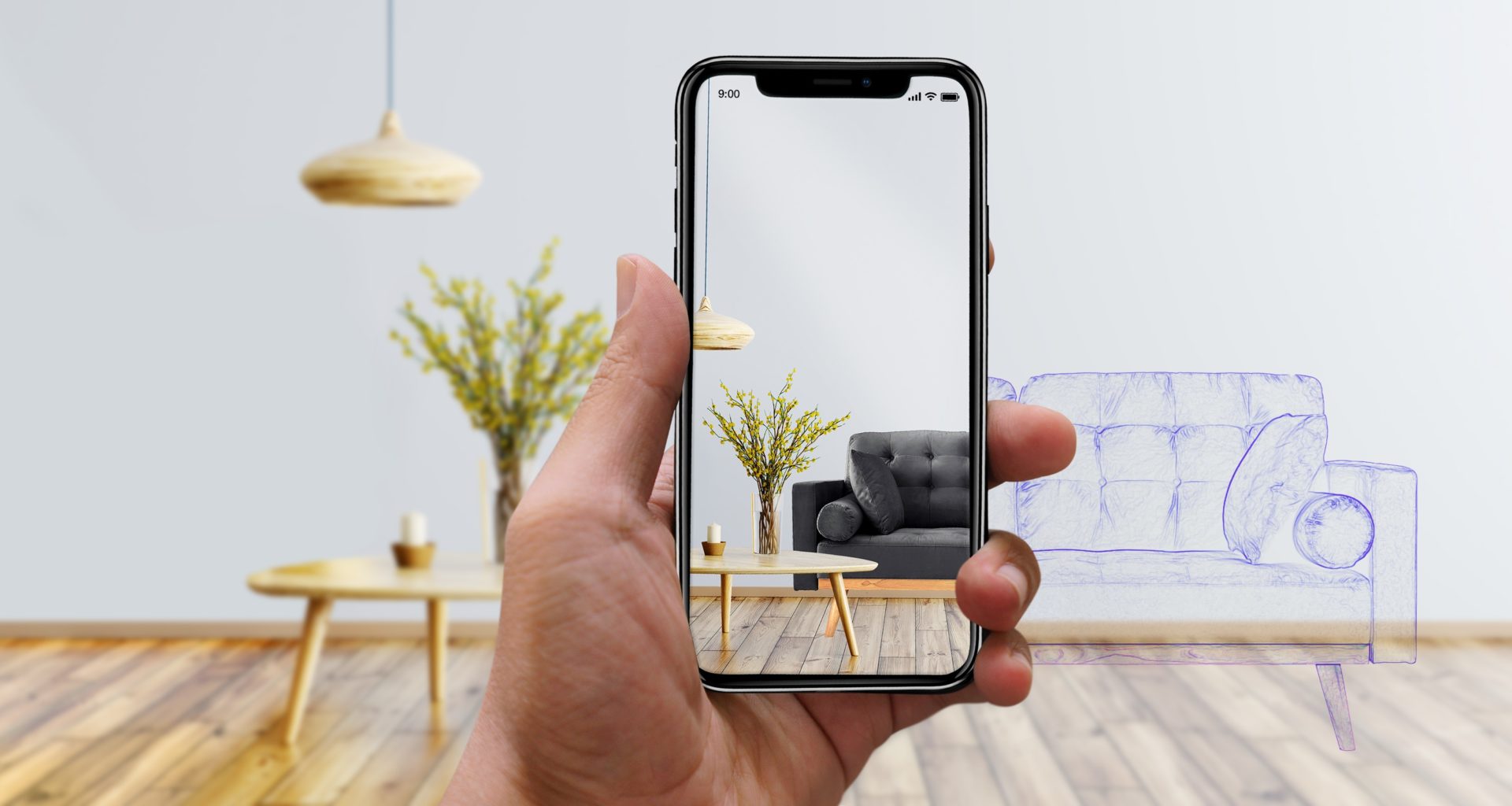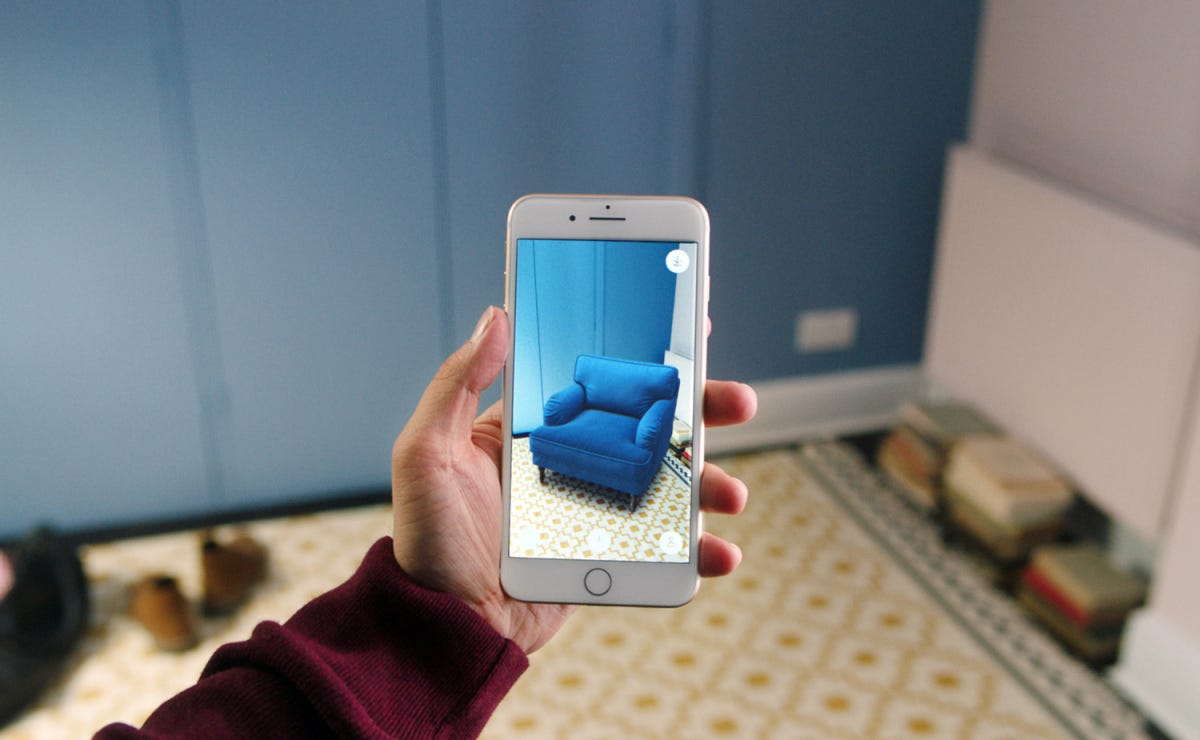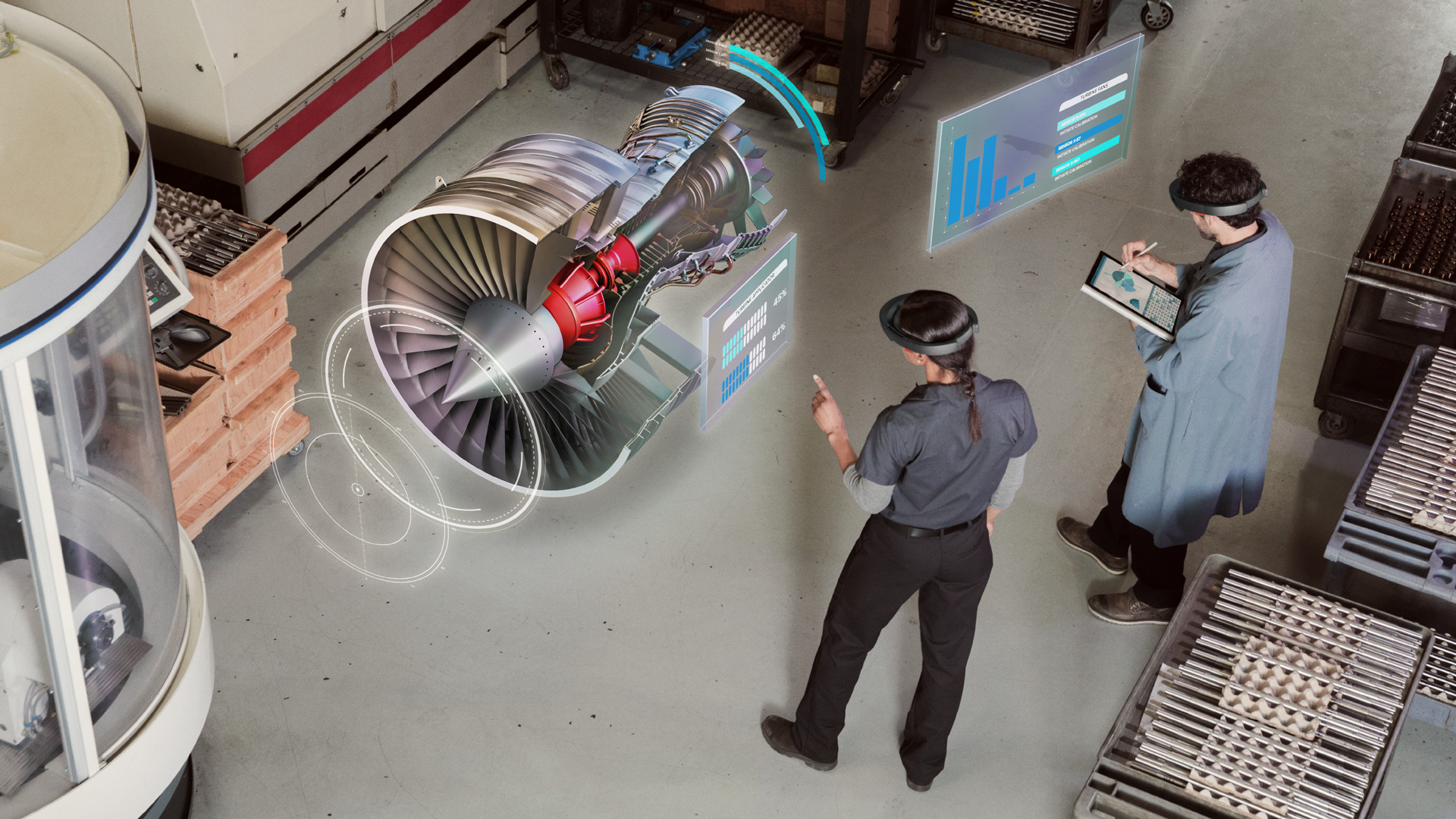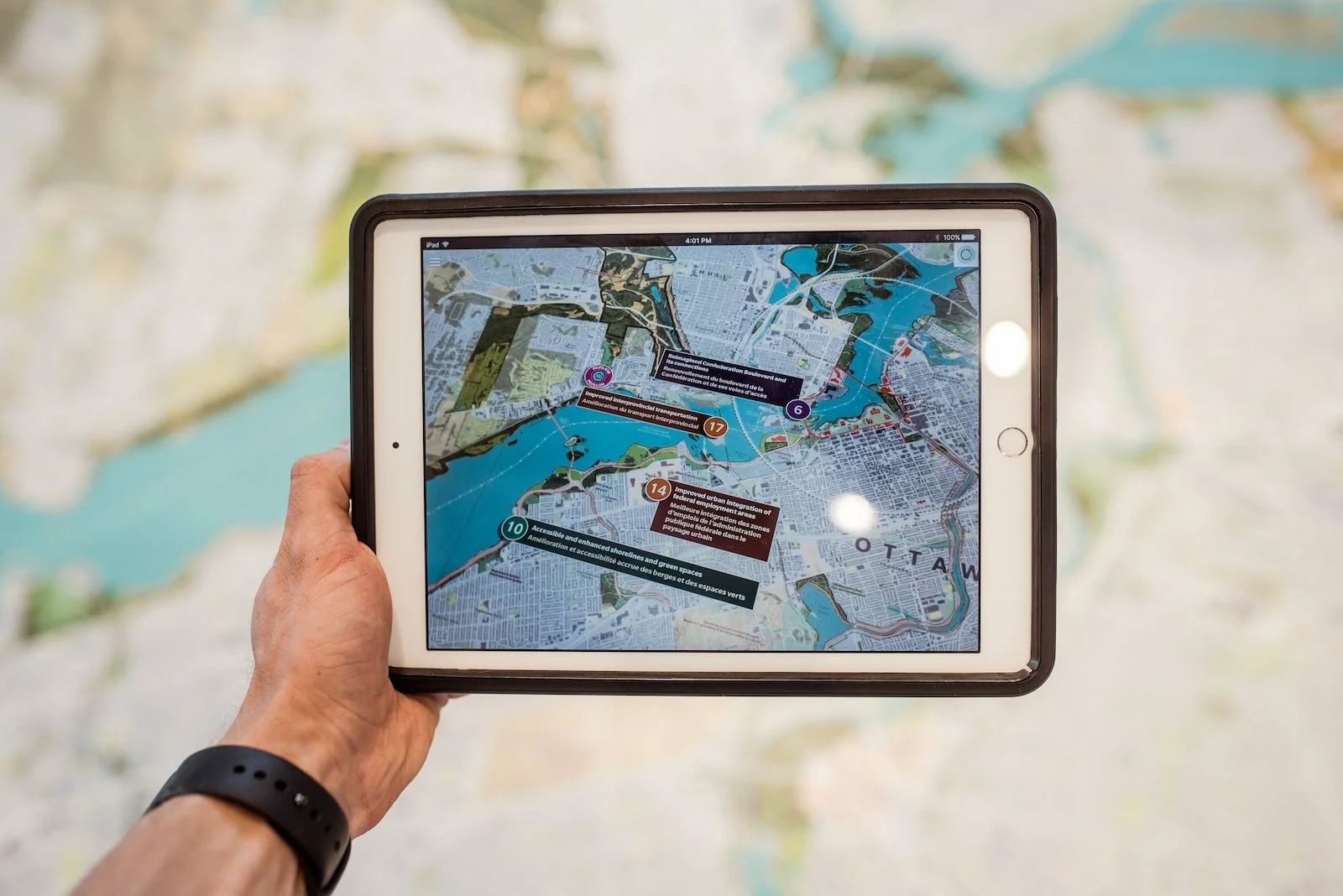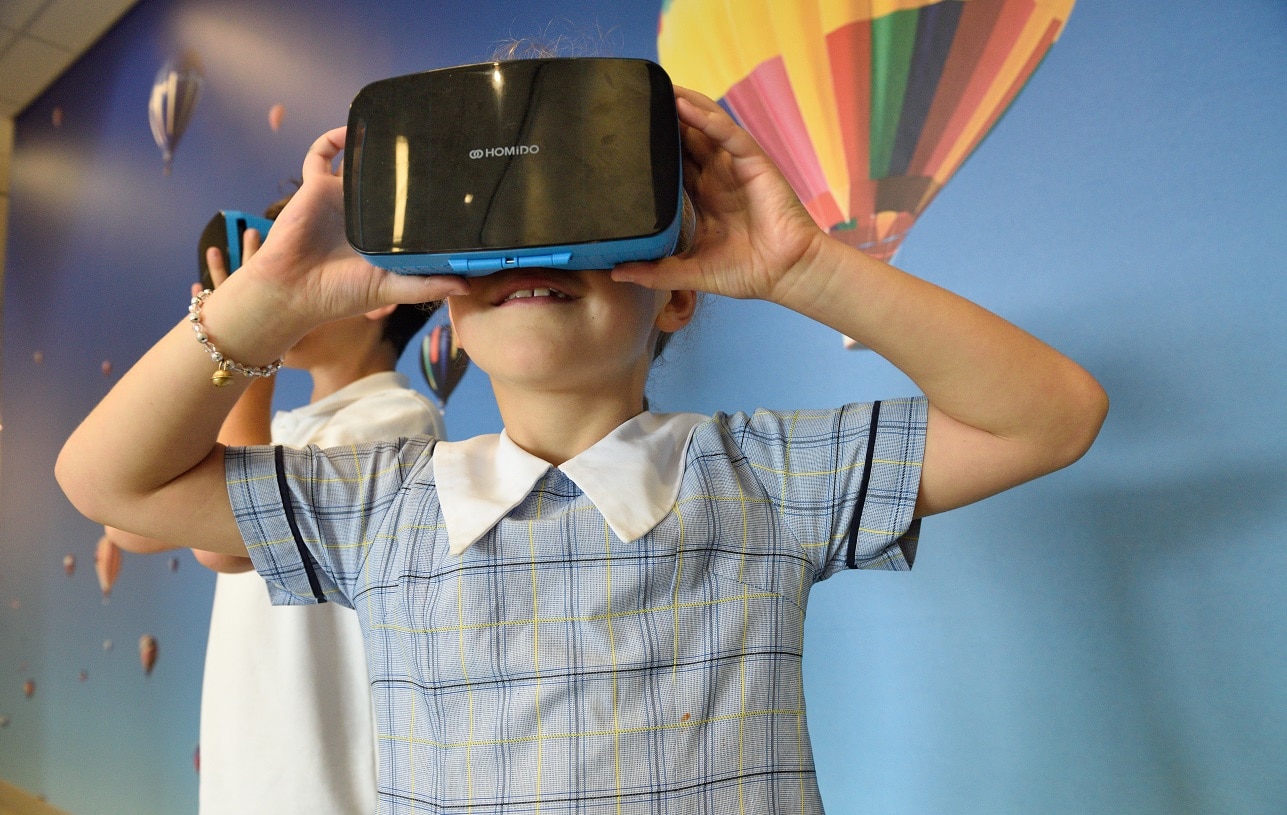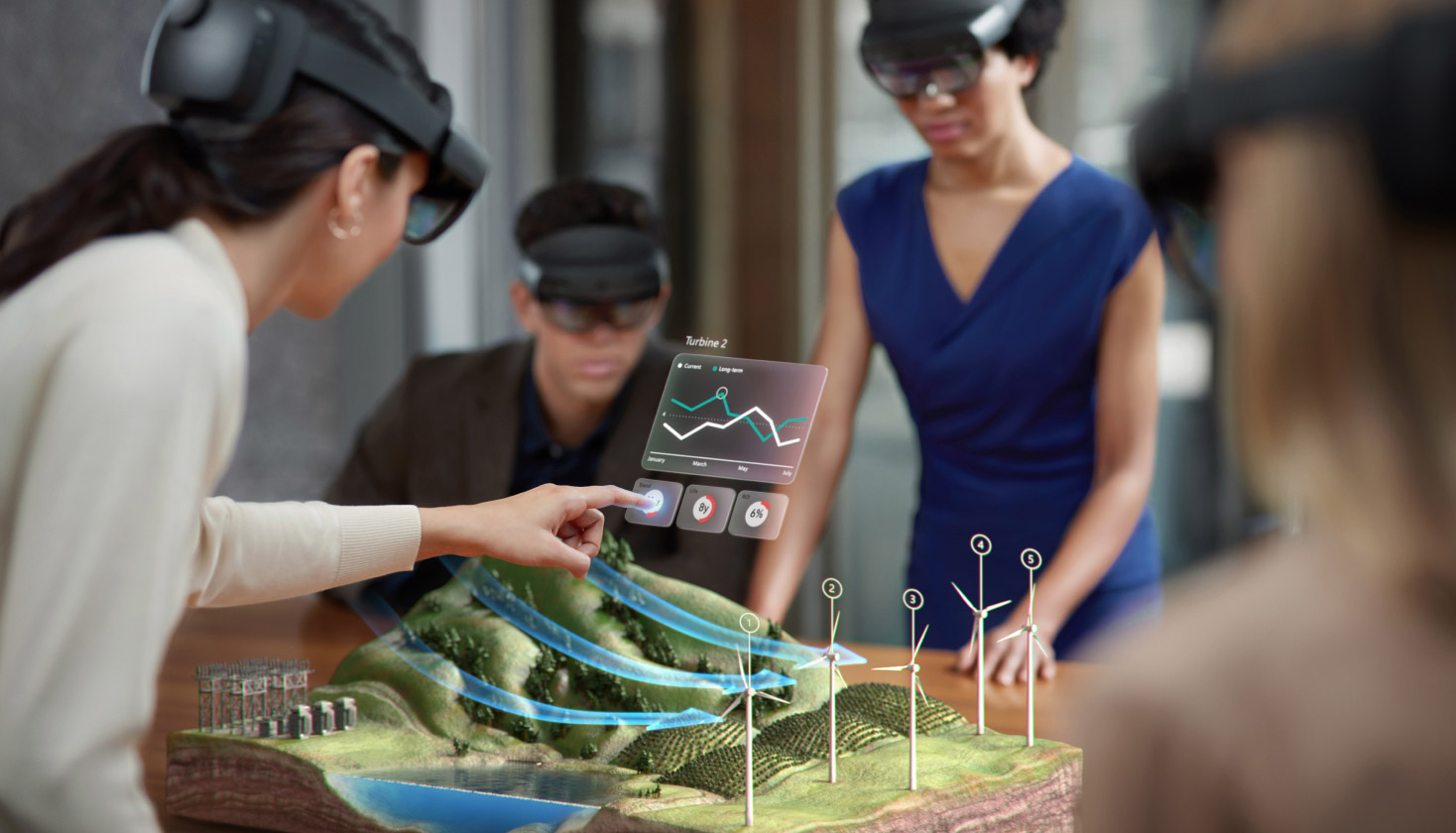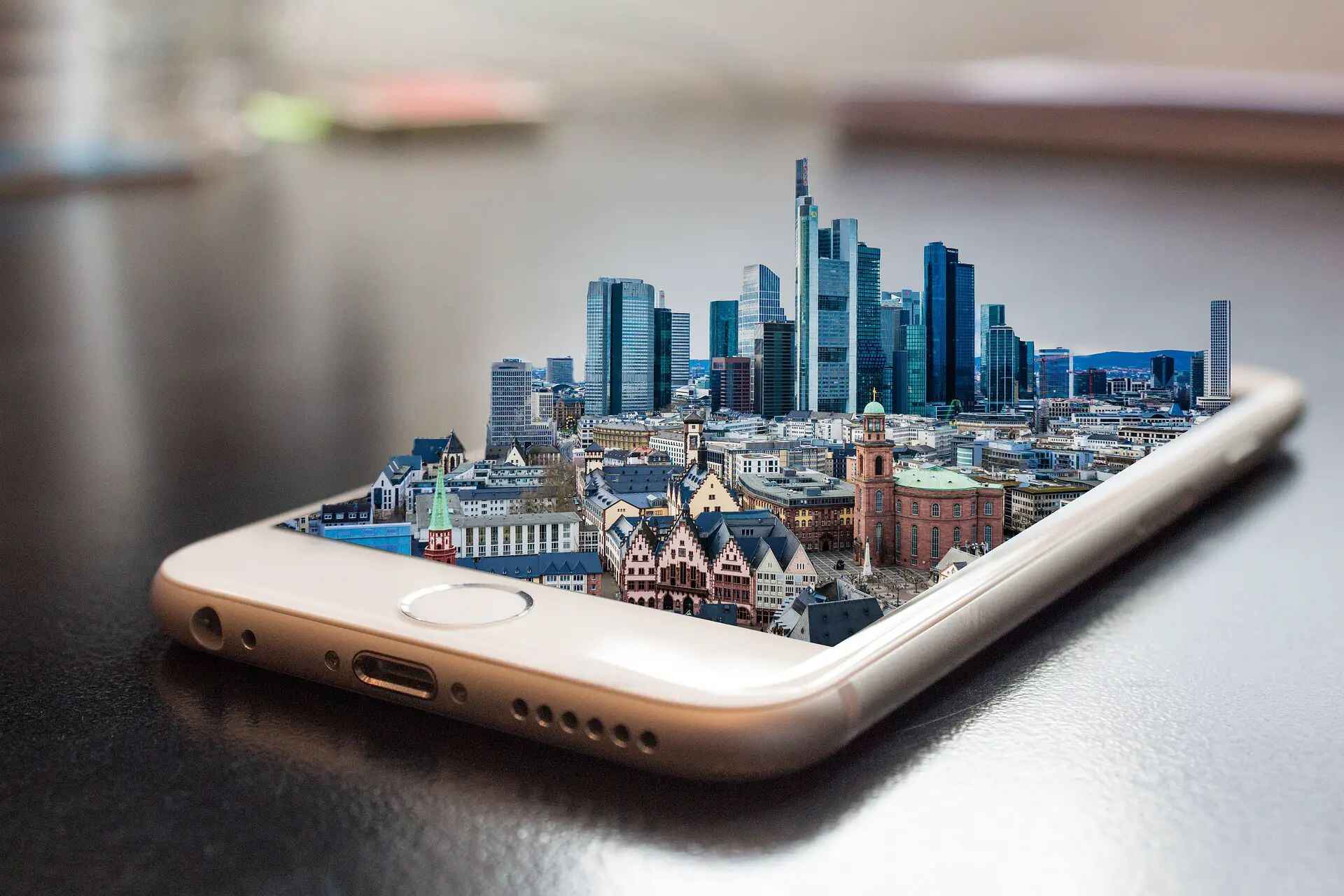Introduction
Augmented reality (AR) has rapidly gained popularity in recent years as an emerging technology that combines the virtual and real world. It has revolutionized various industries and transformed the way we interact with digital information. AR immerses users in a digitally enhanced environment where virtual objects are seamlessly integrated into the physical world.
This cutting-edge technology has captivated both businesses and consumers, opening up a realm of possibilities for entertainment, education, healthcare, marketing, and more. By overlaying digital content onto real-world settings, AR has the potential to enhance our perception of reality and provide immersive experiences like never before.
AR is not limited to just gaming or entertainment. It has extended its reach to practical applications, such as home décor, navigation, training simulations, and product visualization. With the rapid advancements in AR development and the increasing adoption of smartphones, the technology has become more accessible to the masses.
By leveraging the power of computer vision, augmented reality enables devices to recognize and track physical objects, allowing digital information to be blended seamlessly with the real-world environment. This fusion of virtual and real elements creates a unique and interactive experience, blurring the boundaries between what is real and what is digital.
As the demand for augmented reality continues to grow, businesses are finding creative ways to incorporate this innovative technology into their strategies. From AR-enabled shopping experiences to virtual try-on features, companies are leveraging AR to enhance customer engagement and drive sales.
However, while augmented reality holds immense potential, it is not without its challenges. The technology requires powerful devices, reliable tracking systems, and sophisticated algorithms to deliver a seamless augmented experience. There are also concerns around privacy, security, and ethical considerations that need to be addressed as AR becomes more integrated into our daily lives.
In this article, we will explore the concept of augmented reality in depth, examining how it works, its various types, and its practical applications in everyday life. We will also discuss the benefits and challenges associated with augmented reality and glimpse into its exciting future.
Definition of Augmented Reality
Augmented reality (AR) is a technology that overlays digital information, such as images, videos, and 3D models, onto the real-world environment, enhancing our perception and interaction with the physical world. Unlike virtual reality, which creates a completely immersive digital experience, augmented reality blends virtual elements with our surroundings, creating an augmented view.
AR relies on computer vision and a combination of technologies such as cameras, sensors, and displays to seamlessly integrate virtual content into the real world. It tracks the user’s movements and aligns the virtual objects with the user’s perspective in real-time, allowing for a dynamic and interactive experience.
The objective of augmented reality is to enhance our everyday experiences by providing additional context, information, or entertainment within our physical environment. Whether it is visualizing furniture in your living room before purchasing it or receiving real-time directions displayed on the street as you navigate a new city, AR aims to improve our understanding and engagement with the world around us.
AR can be experienced through various devices, including smartphones, tablets, smart glasses, and headsets. With the advancement of mobile technology, AR has become more accessible to the general public, with applications downloadable from app stores and web-based platforms.
Augmented reality can be categorized into two main types: marker-based AR and markerless AR. Marker-based AR relies on predefined markers, such as QR codes or images, to trigger the overlay of digital content. Markerless AR, on the other hand, utilizes computer vision algorithms and object recognition to place virtual objects in the real world without the need for markers.
Overall, the essence of augmented reality lies in the seamless integration of digital information into our physical environment, creating an enhanced and interactive experience that expands our perception and interaction with the world.
How Augmented Reality Works
Augmented reality (AR) relies on a combination of hardware and software components to seamlessly blend virtual content with the real world. The process of how AR works can be broken down into several key steps:
1. Sensing and Tracking: AR devices, such as cameras, sensors, and GPS, capture and gather data about the user’s physical environment. This includes information about the user’s location, orientation, and the objects in their surroundings.
2. Mapping: The collected data is then processed and mapped to create a digital representation of the real-world environment. This involves identifying and tracking specific features, such as edges, shapes, or markers, that serve as reference points for anchoring virtual content.
3. Registration: Once the physical environment is mapped, the AR system aligns and registers the virtual content to the real-world scene. This ensures that the virtual objects are placed accurately in relation to the physical objects, allowing for a seamless and realistic augmentation.
4. Rendering: The registered virtual content is then rendered and displayed to the user in real-time. This can include 2D images, 3D models, videos, or textual information, depending on the intended application of the AR experience.
5. Interaction: Users can interact with the augmented content through gestures, voice commands, or physical inputs. This interaction can involve manipulating virtual objects, accessing additional information, or triggering specific actions within the AR environment.
6. Continuity: AR systems continuously monitor and update the user’s position and environment to ensure that the virtual content maintains its alignment and appearance in real-time. This allows for a seamless AR experience, even as the user moves or the environment changes.
It is important to note that the precise implementation of AR technology can vary depending on the device or platform being used. Some AR experiences can be delivered through smartphones or tablets using built-in cameras and sensors, while others may require specialized AR glasses or headsets to provide a more immersive and hands-free experience.
Overall, the process of how augmented reality works involves capturing and processing real-world data, aligning and registering virtual content, and rendering an augmented view that seamlessly integrates with the user’s physical environment.
Types of Augmented Reality
Augmented reality (AR) can be classified into different types based on the way virtual content is overlaid onto the real-world environment. Each type offers unique capabilities and applications, bringing AR experiences to various industries and user contexts. Here are the main types of augmented reality:
1. Marker-based AR: Marker-based AR, also known as image recognition AR, relies on predefined markers, such as QR codes or images with distinct patterns, to trigger the overlay of virtual content. When the AR device detects a specific marker, it aligns the virtual objects to appear in the correct position and orientation relative to the marker. This type of AR is commonly used in advertising, entertainment, and educational applications.
2. Markerless AR: Markerless AR, also known as location-based or position-based AR, utilizes computer vision algorithms and sensors to place virtual objects in the real world without the need for markers. The AR system analyzes the user’s surroundings, such as buildings, landscapes, or objects, to anchor and align the virtual content. Markerless AR is often used in navigation, tourism, and architectural applications.
3. Projection-based AR: Projection-based AR projects virtual content directly onto real-world surfaces, such as walls or floors, using projection mapping technology. The virtual objects are spatially aligned and adjusted to fit the physical environment, creating immersive and interactive experiences. Projection-based AR is commonly used in art installations, exhibitions, and live events.
4. Superimposition-based AR: Superimposition-based AR overlays virtual content onto a specific object in the real world, replacing or enhancing its visual appearance. By tracking the object’s geometry, position, and orientation, the AR system can apply digital textures, animations, or information directly onto the object. This type of AR is used in industries such as retail, fashion, and interior design.
5. Outlining-based AR: Outlining-based AR outlines and highlights specific features or objects in the real world using augmented reality. It helps users identify and locate objects of interest by outlining them with virtual markers or highlights. This type of AR is commonly used in industrial applications, maintenance, and medical fields for precise object identification and assistance.
6. Wearable AR: Wearable AR involves the use of specialized devices, such as smart glasses or headsets, to provide a hands-free and immersive augmented reality experience. These devices have built-in displays, sensors, and cameras that enable users to see and interact with virtual content seamlessly integrated into their field of view. Wearable AR is used in industries such as manufacturing, healthcare, and remote assistance.
These types of augmented reality offer diverse possibilities for creating interactive and dynamic experiences that enhance our perception and interaction with the world. From marker-based AR for playful interactions to wearable AR for professional applications, each type caters to different user needs and use cases.
Examples of Augmented Reality in Everyday Life
Augmented reality (AR) has permeated various aspects of our everyday lives, transforming the way we interact with the world around us. Here are some examples of how AR is being integrated into everyday experiences:
1. Retail: In the retail industry, AR is revolutionizing the way we shop. Virtual try-on features allow customers to digitally “try on” clothing, accessories, or cosmetics before making a purchase. AR apps also enable users to visualize furniture or home decor in their own space, giving them a realistic preview of how it will look.
2. Navigation: AR-based navigation applications overlay directional information, such as street names and arrows, onto the real world, making it easier for users to navigate unfamiliar environments. By using a smartphone or wearable device, users can receive real-time turn-by-turn directions displayed on their screen as they walk or drive.
3. Education: AR is transforming education by bringing subjects to life through interactive experiences. AR-enabled textbooks and educational apps provide students with a more engaging and immersive learning environment. For example, they can explore the solar system in 3D, dissect virtual organisms, or visualize historical events.
4. Gaming: AR has made a significant impact on the gaming industry with popular games like Pokémon Go. Players use their smartphones to capture virtual creatures overlaid onto the real world. AR gaming creates a blended reality where players can interact with virtual characters and objects as if they were part of their physical surroundings.
5. Real Estate: AR is changing the way real estate is marketed and experienced. With AR apps, potential buyers can virtually tour properties and see how different furnishings or renovations would look in real time. This technology allows buyers to visualize and make informed decisions without physically visiting each property.
6. Healthcare: In healthcare, AR is being used for training, surgical planning, and patient education. Surgeons can use AR overlays to visualize patient anatomy during complex procedures, providing them with real-time guidance and enhancing precision. AR apps can also educate patients about their conditions by overlaying interactive 3D models onto their bodies.
7. Entertainment: AR has found its way into various forms of entertainment, such as live events and concerts. By integrating AR elements into performances, artists can create stunning visual effects that appear to interact with the physical stage. This enhances the overall experience and immerses audiences in a unique and unforgettable show.
These are just a few examples of how augmented reality is becoming an integral part of our daily lives. As technology continues to advance, we can expect even more innovative applications of AR that will further transform how we engage with the world around us.
Benefits of Augmented Reality
Augmented reality (AR) offers a multitude of benefits across various industries and user contexts. From enhancing productivity to providing immersive experiences, here are some key advantages of adopting augmented reality:
1. Enhanced Visualization: AR enables users to visualize and interact with digital content overlaid onto the real world. This can help in understanding complex concepts, visualizing designs before implementation, and providing real-time feedback. Whether it is visualizing new furniture in a room or understanding the inner workings of a machine, AR enhances our ability to visualize and comprehend information.
2. Improved Training and Education: AR provides a hands-on and interactive learning experience, making it valuable in training and education. It allows users to practice tasks in a simulated environment, reducing the risks and costs associated with real-world training. AR can also present information in a visually engaging manner, enhancing the learning experience and improving knowledge retention.
3. Increased Efficiency and Productivity: By overlaying relevant information onto the real world, AR can streamline workflows and improve productivity. For example, technicians can use AR to access real-time instructions or troubleshooting guides while performing repairs. This eliminates the need for flipping through manuals and enables quicker and more accurate problem-solving.
4. Enhanced Customer Engagement: AR offers businesses the opportunity to engage customers in unique and immersive ways. By providing AR experiences, such as virtual try-on features or interactive product demonstrations, businesses can enhance the customer shopping experience and influence purchasing decisions. AR can also create memorable marketing campaigns that capture user attention and generate brand loyalty.
5. Remote Collaboration and Assistance: AR enables remote collaboration and support by allowing users in different locations to virtually share the same augmented environment. Experts can provide guidance and assistance in real-time, reducing travel costs and downtime. This is particularly beneficial in fields such as remote technical support, remote training, and remote healthcare consultations.
6. Accessibility and Inclusivity: AR can make information and experiences more accessible to individuals with disabilities. By overlaying captions, translations, or audio descriptions onto the real world, AR can provide equal access to information and experiences for people with visual or hearing impairments. This promotes inclusivity and ensures that everyone can benefit from AR technology.
7. Novel Experiences and Entertainment: AR brings a sense of novelty and excitement to experiences, enhancing entertainment and leisure activities. From AR gaming experiences to interactive art installations, AR offers unique and immersive experiences that captivate users and drive engagement. It opens up possibilities for new forms of storytelling and creative expressions.
These benefits demonstrate the potential of augmented reality to improve our lives, enhance various industries, and reshape the way we experience the world around us. As AR technology continues to evolve, we can expect even more innovative applications and advantages to emerge.
Challenges of Augmented Reality
While augmented reality (AR) offers numerous benefits and exciting possibilities, there are also several challenges that need to be addressed for its widespread adoption and seamless integration into our daily lives. Here are some of the key challenges of augmented reality:
1. Hardware Limitations: AR experiences require hardware devices with advanced capabilities, including powerful processors, high-resolution displays, and accurate tracking sensors. However, these devices can be expensive and may not be accessible to everyone. Improvements in hardware technology and affordability are necessary to ensure broader adoption and user acceptance of AR.
2. User Interface Design: Designing intuitive and user-friendly interfaces for AR is a complex task. Developers need to create interfaces that effectively present digital content while maintaining the user’s awareness of the real-world environment. Achieving a balance between providing information and avoiding visual clutter is crucial to ensure a seamless and enjoyable AR experience.
3. Tracking and Calibration: AR relies on accurate tracking and calibration of the user’s position and environment for the overlay of virtual content. Ensuring precise alignment and registration of virtual objects with the real world can be challenging, especially in dynamic environments or with limited tracking capabilities. Improving tracking algorithms and technologies is essential for delivering a seamless and immersive AR experience.
4. Content Creation and Integration: Creating compelling and interactive AR content requires specialized skills and tools. Developing 3D models, animations, and interactive elements that align and interact seamlessly with the real world can be time-consuming and costly. Content creators need accessible and user-friendly tools that simplify the process of generating AR experiences and integrating them into existing platforms.
5. Privacy and Security: AR raises concerns regarding privacy and security. As AR applications collect and process real-world data, including personal and location information, it is crucial to address privacy concerns and ensure data protection. Safeguarding user privacy and preventing unauthorized access to sensitive information will be essential to maintain user trust and confidence in AR technology.
6. Ethical Considerations: Introducing AR into our daily lives raises ethical considerations. Issues such as the impact of prolonged AR use on individuals’ mental and physical well-being, potential addiction, and the ethical use of AR in advertising and data collection need to be carefully addressed. Establishing ethical guidelines and regulations will be important to ensure responsible and ethical use of AR technology.
7. Cultural and Social Acceptance: AR has the potential to change social dynamics and interactions. However, its widespread adoption may face cultural and social resistance. Overcoming concerns and misconceptions about AR, addressing social acceptance issues, and educating users about the benefits and proper use of AR technology will play a crucial role in its successful integration into society.
Addressing these challenges will be instrumental in harnessing the full potential of augmented reality and realizing its widespread adoption across industries and user contexts. Collaboration between technology developers, researchers, policymakers, and users will be crucial to overcome these obstacles and shape a future where AR seamlessly integrates into our daily lives.
Future of Augmented Reality
The future of augmented reality (AR) is filled with exciting possibilities and advancements that will continue to shape how we interact with the digital and physical worlds. Here are some key trends and developments that hold promise for the future of AR:
1. Advancements in Hardware: With ongoing advancements in hardware technology, we can expect more powerful and affordable devices for AR. Smaller form factors, improved processing capabilities, and higher-resolution displays will contribute to better AR experiences. Additionally, the integration of technologies like 5G and edge computing will enable faster data processing and reduce latency, enhancing the overall AR performance.
2. Wearable AR Devices: The development of wearable AR devices, such as smart glasses and headsets, will provide more immersive and hands-free AR experiences. These devices will leverage advancements in miniaturization, display technologies, and sensors to seamlessly integrate virtual content with our field of view. The use of wearables will revolutionize industries like healthcare, manufacturing, and remote assistance by enhancing productivity and enabling new forms of collaboration.
3. Improved Tracking and Mapping: AR experiences will benefit from advances in computer vision and machine learning algorithms, enabling more accurate and robust tracking, mapping, and object recognition. This will result in smoother and more realistic AR overlays, even in dynamic and complex environments. Progress in spatial mapping technologies will also contribute to more precise alignment and registration of virtual objects in the real world.
4. Augmented Reality in Social Interactions: AR has the potential to reshape social interactions by introducing shared augmented spaces. Users will be able to collaborate and communicate in virtual environments, blurring the boundaries between physical and digital presence. AR-powered social platforms and applications will enable real-time sharing of experiences, fostering new forms of social engagement and connection.
5. Integration with Internet of Things (IoT): AR and IoT integration will create powerful synergies. AR will provide real-time information and visualization of IoT data, enhancing the understanding and control of connected devices. For example, AR can overlay data from sensors onto physical objects, allowing users to monitor and interact with their smart home devices or track real-time information about their environment.
6. Augmented Reality for Workforce Training: AR has immense potential in workforce training, especially in industries like healthcare, engineering, construction, and manufacturing. AR-enabled training simulations will allow employees to practice complex tasks in realistic environments, reducing costs and improving safety. This technology will speed up the learning curve and empower workers with essential skills in a hands-on and risk-free manner.
7. Augmented Reality in Smart Cities: AR will play a significant role in transforming cities into smart and connected spaces. AR overlays can provide information about points of interest, public transportation, and real-time updates on events or emergencies. This technology will enhance citizen engagement, facilitate navigation, and deliver personalized services, ultimately making cities more efficient and livable.
The future of augmented reality holds immense potential to revolutionize industries, improve daily experiences, and transform the way we interact with the world. With continued innovation, collaboration, and investment, AR will become increasingly integrated into our lives, shaping a future where the boundaries between the virtual and physical realms blur and new possibilities emerge.
Conclusion
Augmented reality (AR) has emerged as a transformative technology that blends the digital and physical worlds, offering unique and immersive experiences across various industries and user contexts. From enhancing visualization and productivity to enabling interactive education and entertainment, AR holds immense potential to shape our daily lives.
Throughout this article, we have explored the concept of augmented reality, delving into its definition, how it works, and its different types. We have also examined the practical applications of AR in everyday life, ranging from retail and navigation to education and healthcare. Additionally, we have discussed the benefits AR brings, such as enhanced visualization, improved training, and increased efficiency.
However, we have also highlighted the challenges that come with adopting augmented reality. Hardware limitations, user interface design, privacy and security concerns, and ethical considerations demand careful attention as AR continues to evolve and integrate into society. Overcoming these challenges will require collaboration and innovation from various stakeholders, including technology developers, researchers, policymakers, and users alike.
As we gaze into the future of AR, we can anticipate exciting developments on the horizon. Advancements in hardware, the rise of wearable devices, and improvements in tracking and mapping technologies will contribute to a more immersive and seamless AR experience. The integration of AR with IoT, the transformation of social interactions, and the wide-scale adoption of AR in smart cities will further shape our understanding and interaction with the world.
With each passing day, augmented reality inches closer to becoming a ubiquitous part of our lives. From revolutionizing industries to enhancing personal experiences, AR has the potential to transform the way we learn, work, shop, and socialize. As we embrace this technology, it is essential to address its challenges, envision its possibilities, and strive for responsible and ethical use.
In conclusion, augmented reality holds the key to unlocking new dimensions of human experience. By seamlessly blending the virtual and the real, AR creates a world where imagination becomes reality, where information becomes interactive, and where new possibilities emerge at the intersection of the digital and physical realms.







